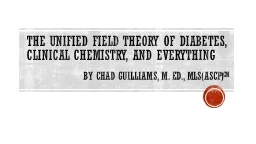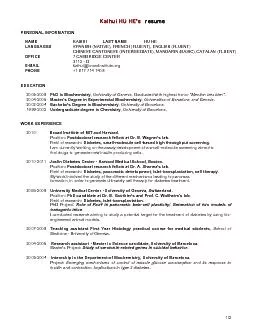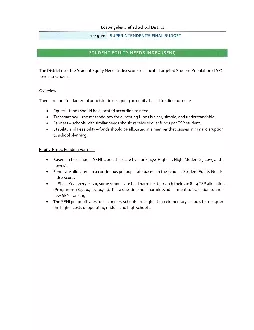PPT-The Unified Field Theory of Diabetes, Clinical Chemistry, a
Author : pamella-moone | Published Date : 2017-11-09
Everything By Chad Guilliams M ED MLSASCP cm Outline Signs Symptoms Complications Selling Sickness Carbohydrates Pancreas Type I vs Type II Diabetes WaterOsmolalityElectrolytes
Presentation Embed Code
Download Presentation
Download Presentation The PPT/PDF document "The Unified Field Theory of Diabetes, Cl..." is the property of its rightful owner. Permission is granted to download and print the materials on this website for personal, non-commercial use only, and to display it on your personal computer provided you do not modify the materials and that you retain all copyright notices contained in the materials. By downloading content from our website, you accept the terms of this agreement.
The Unified Field Theory of Diabetes, Clinical Chemistry, a: Transcript
Download Rules Of Document
"The Unified Field Theory of Diabetes, Clinical Chemistry, a"The content belongs to its owner. You may download and print it for personal use, without modification, and keep all copyright notices. By downloading, you agree to these terms.
Related Documents














